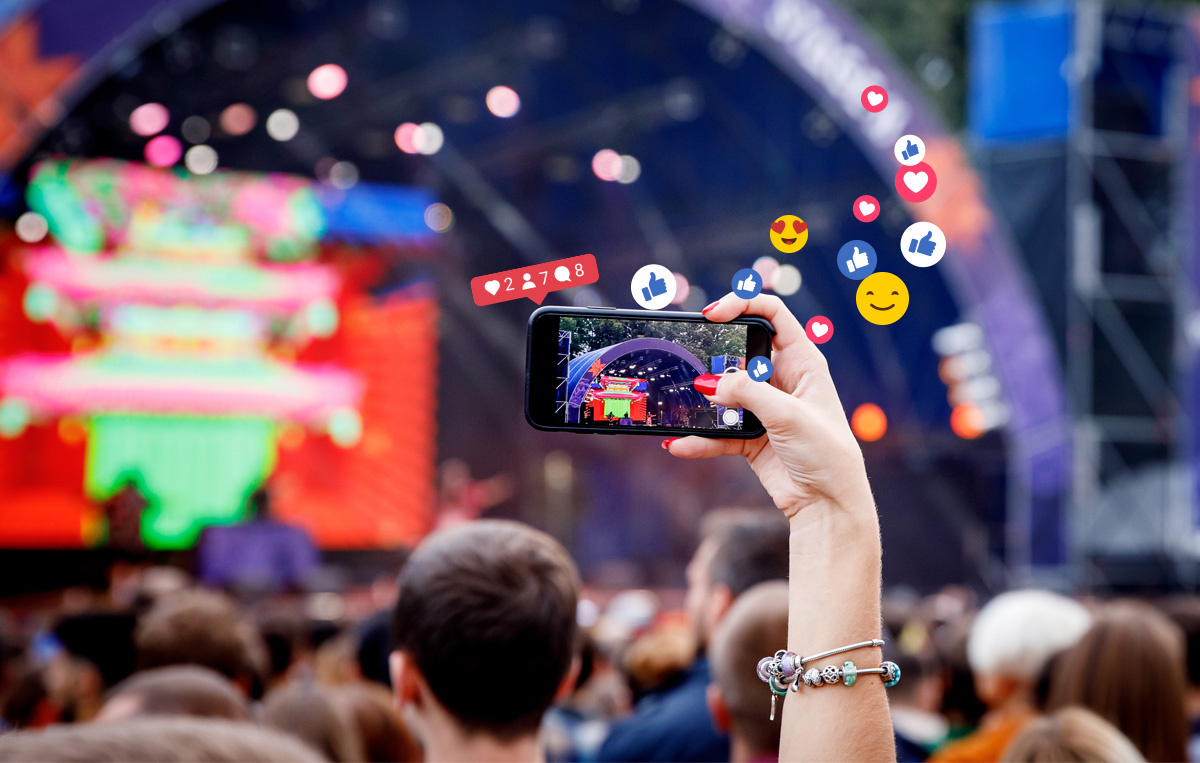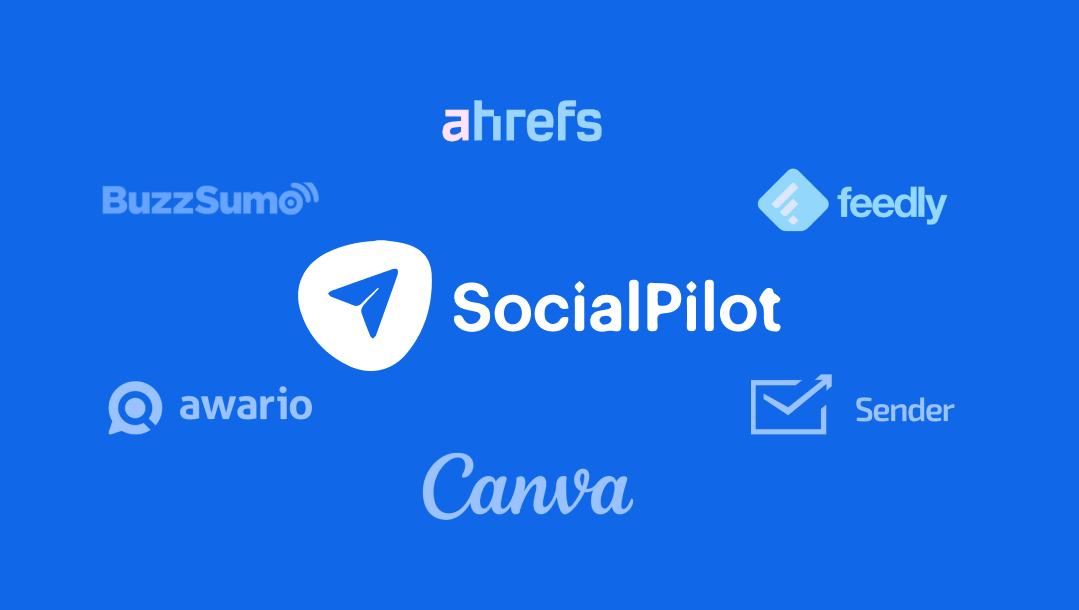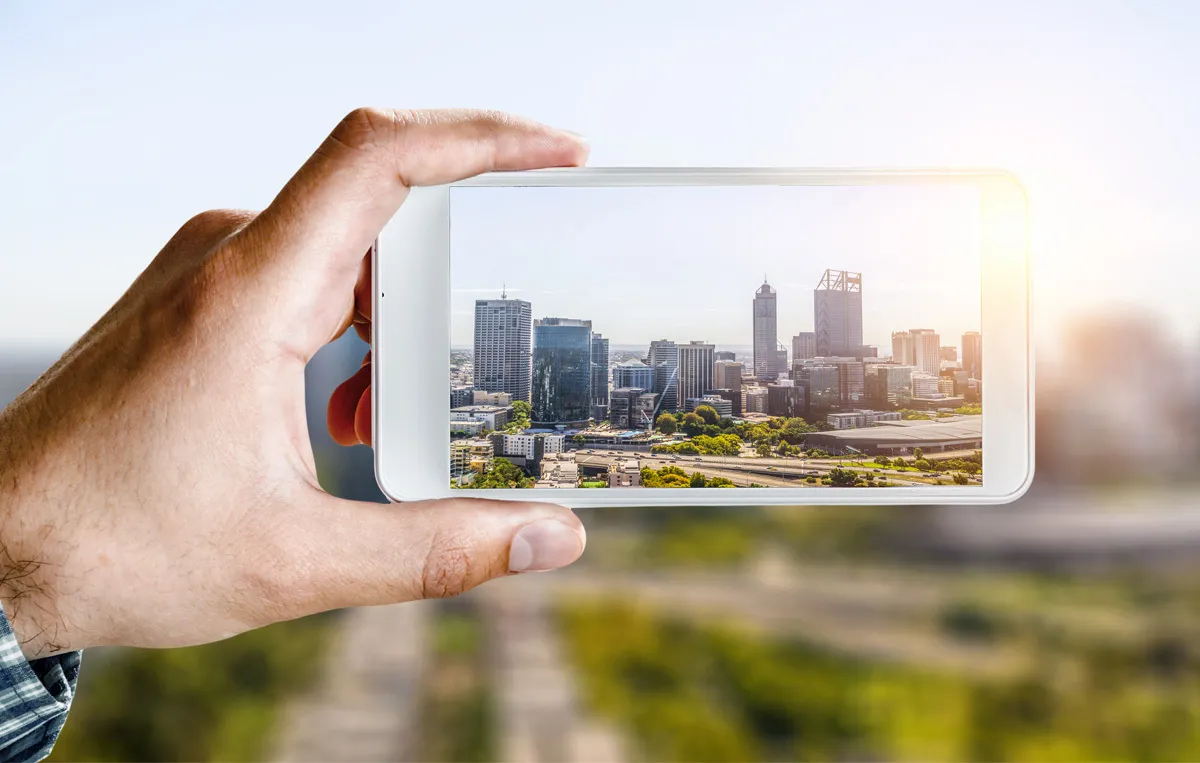Everything sells on social media, so why not events?
Events have been an indirect but effective way of marketing for the longest of times. Even marketers agree with this fact – 52% say event marketing drives the best ROI, and what better way of spreading the word than social media event marketing?
The landscape of commercial events has undergone an unprecedented transformation since the pandemic. When people were prohibited from public gatherings, they adapted, and social media came in clutch.
Gone are the days of relying solely on traditional marketing channels. Social media platforms empower you to tap into the limitless potential of virtual engagement.
We can guarantee that marketing an event takes as much planning and foresight as it does to organize it. But it’s not easy when there’s so much to do. So you must make a social media marketing plan and stick to it.
You can divide your work into three phases for any event’s marketing.
It all starts pre-event, creating hype and awareness and getting the audience’s interest piqued. Then comes the actual event when you ensure it gets the maximum exposure through all the platforms at hand. Lastly, post-event activities, where you reap the results of the events, sharing content captured during it, answering their questions, and responding to their comments.
And believe it or not, social media gives you a fully-equipped arsenal to achieve all your objectives every step of the event.
Need more reasons? Here are some!
Why Should We Indulge in Social Media Event Marketing?
With nearly 4.9 billion of the world’s 8 billion people active on social media, it’s a platform too significant to ignore. But if you need more convincing, here are some compelling reasons:
1. Increased Awareness
Social media is a bustling hub hosting more than half the global population. By crafting a solid social media event marketing strategy, you can help create significant awareness about your event.
Remember, events come and go, unlike product brands which exist continuously. Therefore, they need a boost in as many ways as possible, which are effective at getting your event on your audience’s radar and tapping into more interested segments.
2. Target Effectively
Social media gives you the power to direct your content to specific demographics through organic and paid means. You can even fine-tune your focus based on the different channels’ demographics, as they vary a lot.
3. Creating Hype Through Continuity
With well-planned and strategic posting frequencies, creating a buzz and interest around the event becomes easy. There are ways to find the best times to post on each social media platform. By maintaining a consistent flow of posts surrounding the event on all relevant platforms, you will etch a mark in the audience’s minds, evoking their interest.
4. Easy Engagement Both ways
The easy means of communicating via social media is highly convenient for both the organizers and the audience. This fosters engagement and increases the chances of boosting attendants at the actual event.
5. Cost-Effective Means of Promotion
Although there are paid advertising options on social media, social media is the most cost-effective way of promotion when done organically.
6. Famous Faces from Social Media
Nowadays, influencers are an integral part of marketing. Brands collaborate with influencers from their niche to gain traction among their audience. Social media is where they wield most of their power. Any posts from them talking about the event will get their considerable number of followers interested in them.
7. Leveraging the After-Effects
In a traditional marketing world, the buzz after the actual event dies down, and the chatter disperses. But on social media, the case is different. The buzz doesn’t die down. People keep talking about it, giving their reviews and opinions, and posting images and videos. Marketers can leverage this to their benefit.
We are certain that this makes you believe in the power of social media to help your event take off and attain success. Let’s move to the next step, which involves some important decision-making.
Shall we begin?
Setting the Stage: Preparing for Social Media Event Marketing Success
Setting up a stage for the actual event is all about the logistics, but preparing for marketing is a strategic game. If you don’t cover all the bases, the battle might be lost even before it begins.
Many people rely on the success of marketing strategies and, ultimately, the event itself. Therefore, paying attention to every detail and adopting a well-thought-out approach is crucial.
Everything is on the to-do list, from understanding your target audience, defining measurable goals, crafting a compelling event narrative, and selecting the right social media platforms. We’ll guide you through the planning phase, ensuring you have a solid foundation for successful event promotion.
1. Audience Persona
First things first:
Begin with identifying whom you will be marketing to.
The selection of the ideal audience will depend on the type of event you are trying to market. The possibilities are endless, from conferences, trade expos, seminars/webinars, workshops, launch events, music concerts, meet and greets, and more.
For instance, if we were to market a sculpting workshop, the potential target attendee personas would be aspiring sculptors, hobbyists, curious explorers, or someone seeking therapeutic activities.
By delving deep into the demographics, interests, behaviors, pain points, and possible motivation to attend your target audience, you can tailor your event promotion to resonate with their desires and needs.
Now let’s see where to find these ideal attendees we put our finger on.
2. Choosing the Right Social Media Networks
After defining your target audience personas, the next step is to determine which social media network they frequent. This is a critical step in your social media event marketing strategy.
So aim to hit the bullseye.
- Facebook: With 2.989 billion monthly users as of April 2023, Facebook still remains the largest social platform. You can use it to post event updates, engage with attendees through event pages, and run targeted ads to reach specific demographics.
- Instagram: Boasting a whopping 1.628 billion users, this platform is known for its strikingly aesthetic posts. Instagram sets the perfect stage to showcase visually attractive events like art exhibitions, fashion shows, or food festivals.
- LinkedIn: With over 900 million users, LinkedIn is the perfect place to promote professional gatherings, B2B events, and conferences. The platform enables you to target professionals based on job titles, industry, and company size, making it an effective choice for networking.
- Twitter: Best known for its viral conversations, Twitter hosts 330 million monthly users. The fast-paced nature of the platform makes it perfect for live updates, quick conversations, and following trending topics. Also, this is where people express their opinions, so you keep an eye on what kind of buzz your social media event marketing creates.
- YouTube: As the largest video hub in the world, YouTube gets 2.68 billion monthly active users. The platform has immense potential for posting event highlights, behind-the-scenes footage, and speaker interviews. You can stretch the shelf-life of your event through event videos.
- TikTok: With its viral trends, creative filters, and 1.05 billion monthly users, TikTok has skyrocketed in popularity in a very short time. The app is the perfect space to promote youth-oriented events with a creative agenda. You can start trends with short-form videos and encourage UGC, a tried and tested marketing method on TikTok.
Now let’s come to a major requirement, which is…
3. Budget: Make Every Cent Count
Any form of marketing requires some budget allocation. In 2022, event organizers and marketers spent an average of 15% of their marketing budget on social media. This figure is set to rise as time goes on.
You might find it ironic that we’ve discussed the cost-effectiveness of social media marketing for events, and now we’re talking about budget requirements. Well, it’s a bit more nuanced than that.
Here are the possible elements where monetary requirements come into play:
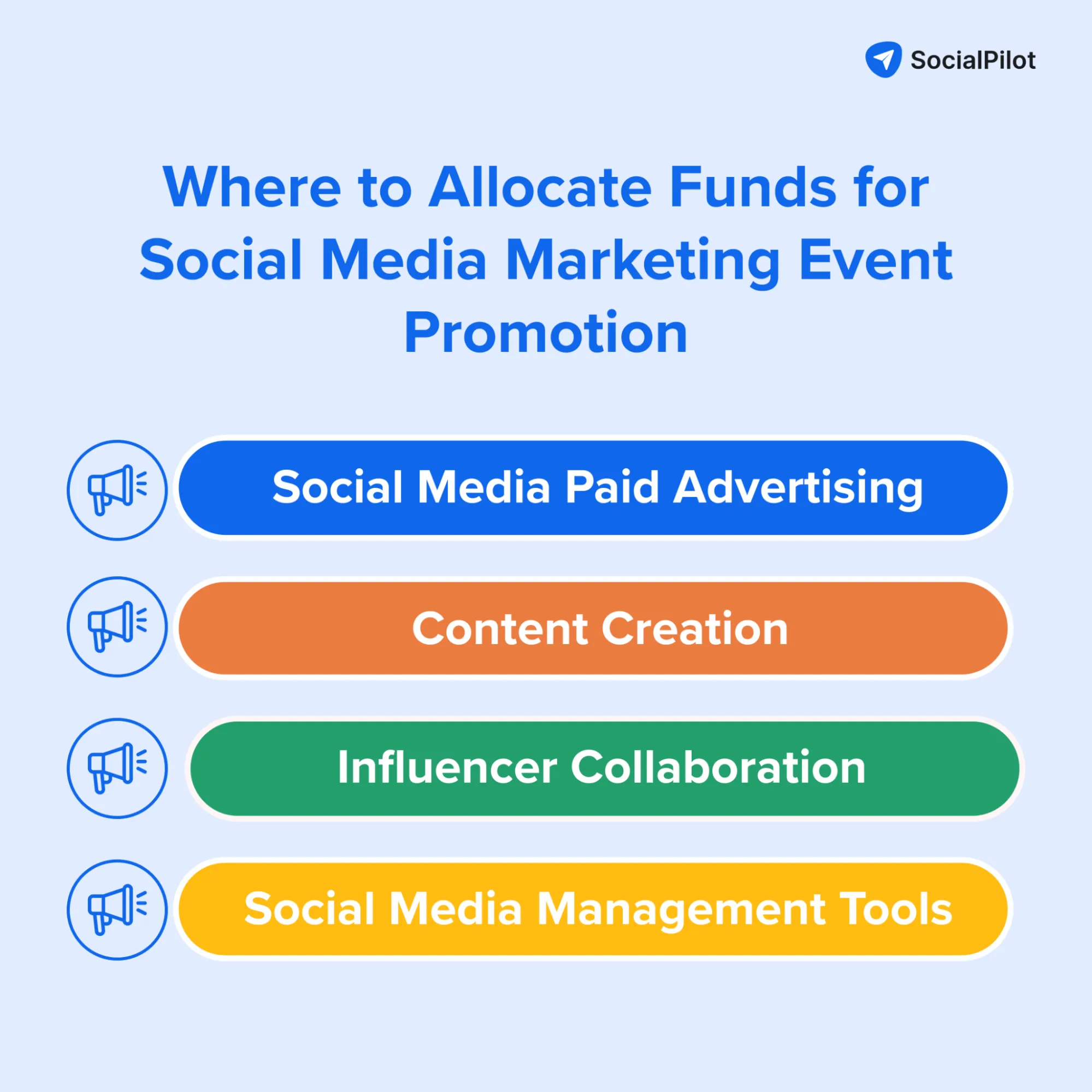
Except for influencer collaboration, the rest can be managed with minimal expenditure. However, allocating a portion of your marketing budget to these elements can give your content that extra visibility boost, ensuring it appears on top of your target audience’s feeds.
4. Influencers on Board
Nowadays, influencers are the magic ingredient for successful social media campaigns. If you’re aiming to make a significant impact online and create buzz-worthy campaigns, bringing influencers on board is the home run you’ve been waiting for.
Just as selecting the right social media networks is crucial, screening and onboarding the right influencer who aligns with your event also requires careful consideration.
Influencers come in various levels of popularity, from micro-influencers who are well-known within their niche, to influencers who have achieved celebrity status.
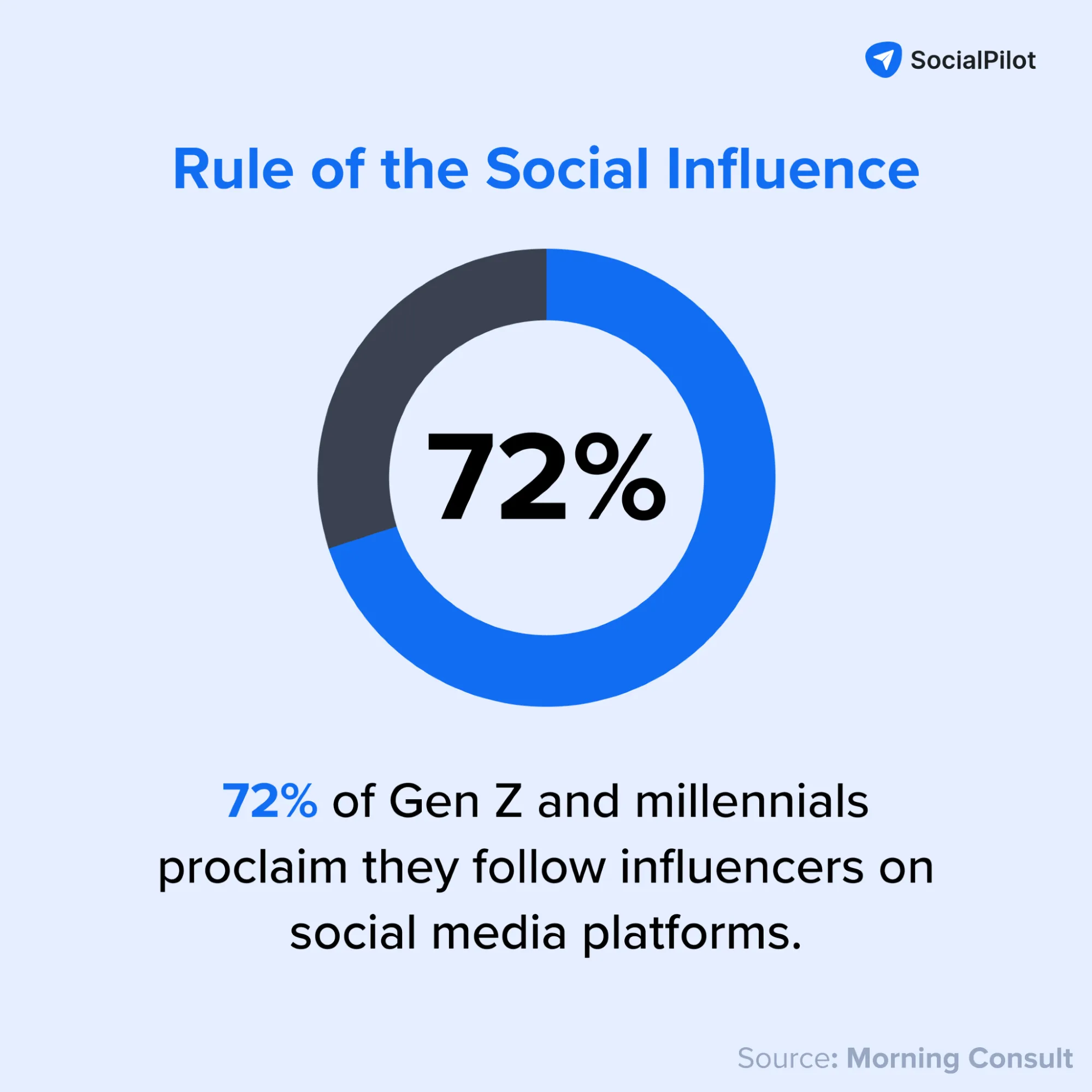
Based on your allocated budget, you’ll need to identify influencers whose follower base overlaps with your target audience. Reach out to them, pitch your offer, and highlight not just the financial compensation but also the potential for increased social media following they could gain.
Remember, for an influencer, there’s no offer more attractive than the opportunity to boost their follower count.
5. Set Your Campaign Hashtag
Hashtags are more than snippets of text; they are neon signs that help your content be discovered. In the context of campaigns or events, they play a crucial role in establishing a distinct identity.
Hashtags can set the tone for the event, creating a relatable and engaging narrative for the audience. They also serve as measurable metrics since they are trackable with specific tools.
Once you decide on a particular hashtag, maintain consistency by including it in all your content and social account bio. Remember, the key is to keep it short, catchy, and promote it across all your content on various social media platforms, even in videos.
Later in the campaign, you can encourage users to use the same hashtag when posting anything related to the event. This not only signals the social algorithm to display your posts on more feeds but also amplifies your reach and engagement.
6. Timeline to Streamline
As mentioned earlier, social media marketing for event promotion can be divided into three phases. But do you know when to kickstart with each of them?
Winging it is not recommended.
Defining the major milestones in your event promotion journey ensures that every piece of content, every interaction, and every engagement is executed at the right moment to create maximum impact.
To start with, decide when the first phase of your social media event marketing will commence. Ensure that it takes off simultaneously on every social network.
While it’s not necessary to assign a date to the during-event activities(as they occur during the event), it’s important to determine how long you plan to continue your post-event social media marketing activities.
After setting up the milestones, structure your content calendar accordingly. Develop a content calendar that outlines specific dates and times for each social media activity, including posting and engagement. This ensures a consistent flow of engaging content, avoiding any last-minute scrambling.
There are numerous social media calendar tools available to help you track the creation, visualization, and execution of your strategy.
Keeping up with your social media posting schedule is itself a hectic task, but doing it with a spreadsheet is worse since it’s not designed for that purpose.
That’s where SocialPilot’s multi-functional Social Media Content Calendar fits the bill perfectly. The calendar has a flexible interface that allows users to visualize their content, even move scheduled posts around if need be, changing their publishing dates and times. Posts can also be created and edited from the calendar itself.
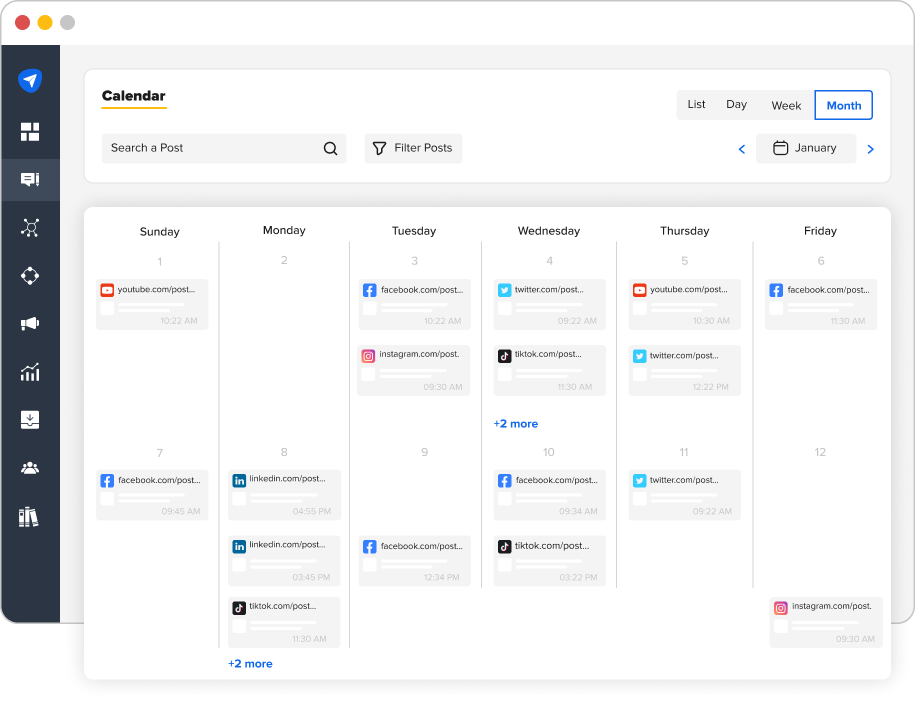
Now that you’ve laid the groundwork for a successful social media event marketing strategy, it’s time to dive into the actual activities. So, get ready to unleash the power of social media as we explore further!
Social Media Event Marketing: A Three-Stage Journey
After setting the stage for victory, it’s time to embark on the eventful journey. Prepare yourself as we explore the pre-event phase, where anticipation builds, the during-event phase, where the magic happens, and the post-event phase, where we’ll leave a lasting impression.
Pre-Event Social Media Activities
In this section, we will see all the ways you can get people from awareness to participation in your event.
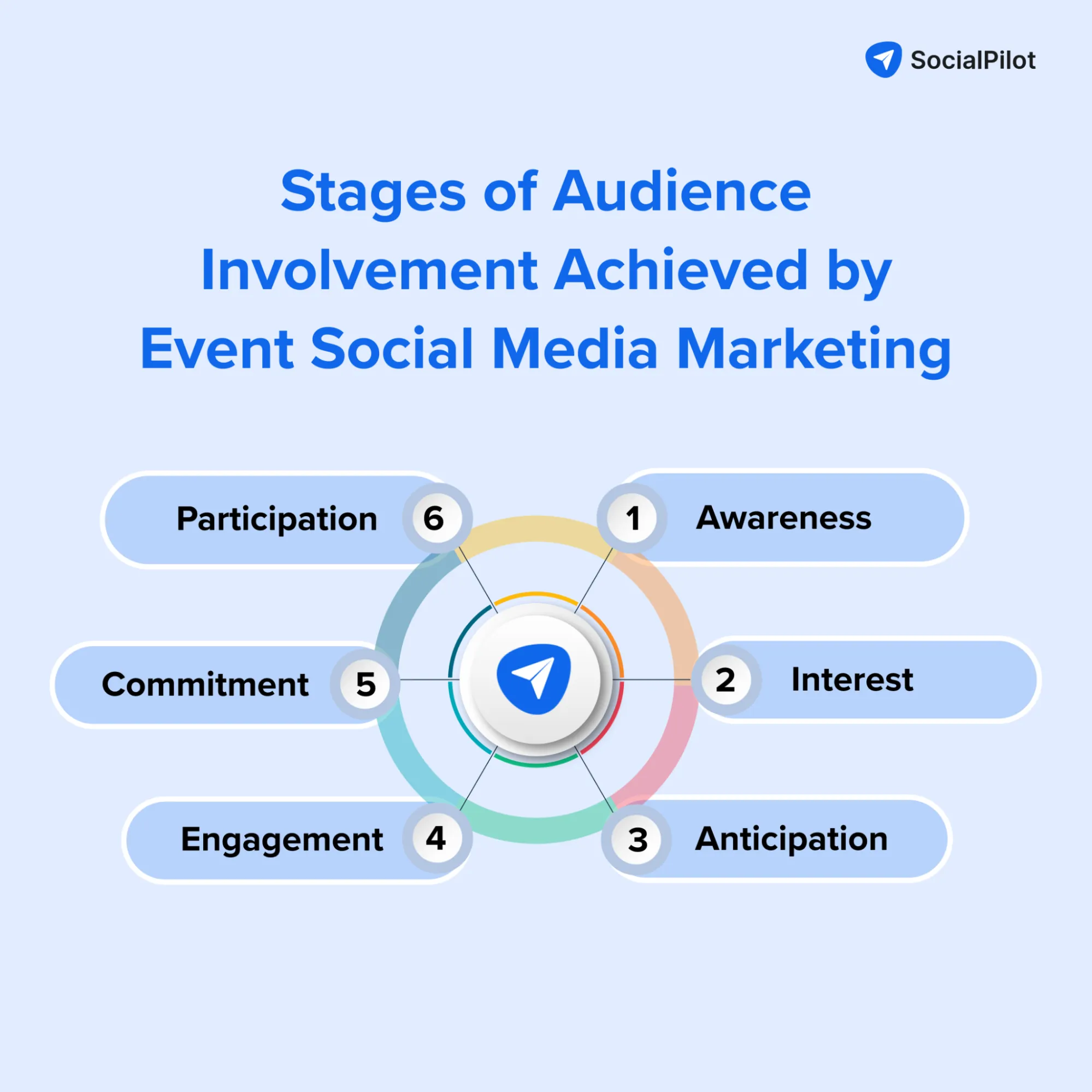
1. Announce the Event Date
First and foremost, you need to announce the date of your event. Build anticipation and create a sense of urgency by revealing the date in a way that leaves them begging for more.
For a professional event or conference, consider creating a separate event page on LinkedIn and adding the event link and link to your company page. For other platforms like Instagram and Facebook, go for more visual posts, incorporating important details like the event’s name, date, and location in the creative.
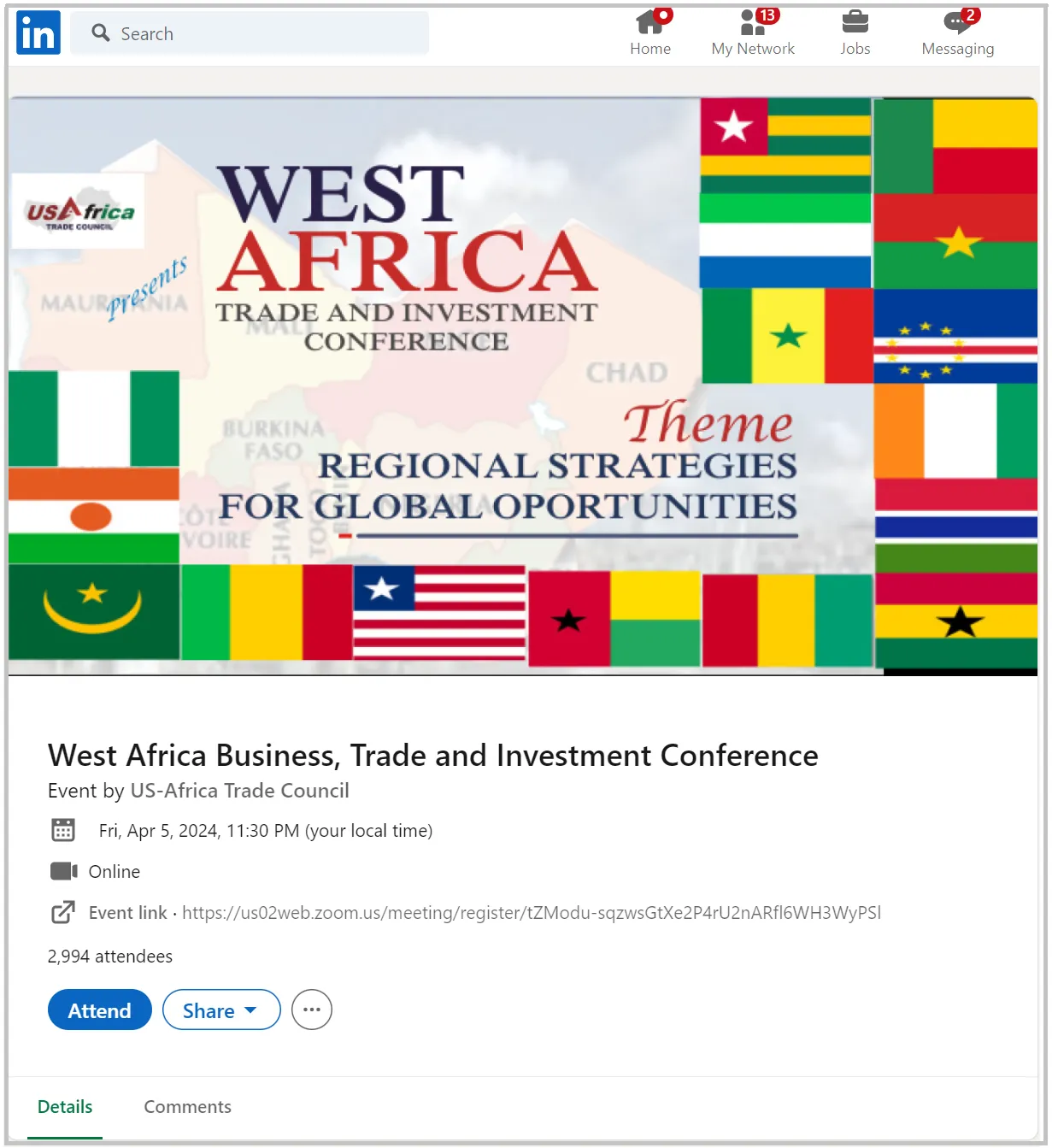
2. Introduce the Official Event Hashtag
As we already have decided on our event’s representative hashtags, introduce the hashtag with much pomp and show. Give context about the event activities and include the hashtags in your event-related posts. Also, encourage the audience to use this hashtag if they post anything or comment on the event itself.
3. Tease the Details to Evoke Curiosity
Now is the time to spark people’s imagination while keeping their curiosity going. Tease your audience with cryptic taglines to ignite their minds. The mysterious “Coming Soon” never fails to intrigue people, so use these in tandem. Include snippets of your event agenda in these posts to enforce our brand.
Look at how this post has incorporated it all while giving away nothing.
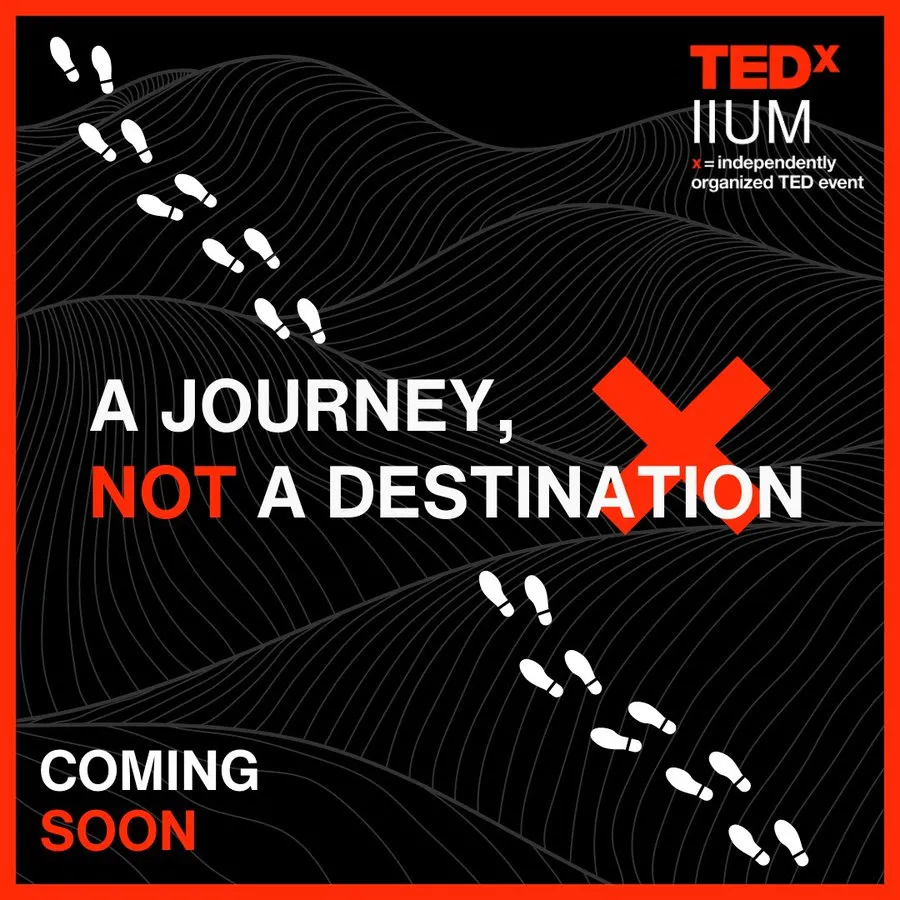
4. Showcase Guest or Speakers’ Lineup
One of the most effective ways to draw attention is to let people know that they are going to be able to see or interact with known faces. So just after the announcement posts go live, roll out the lineup of speakers for the event. If not speakers, then the special attendees, performers, guests of honors, whatever suits the affair.
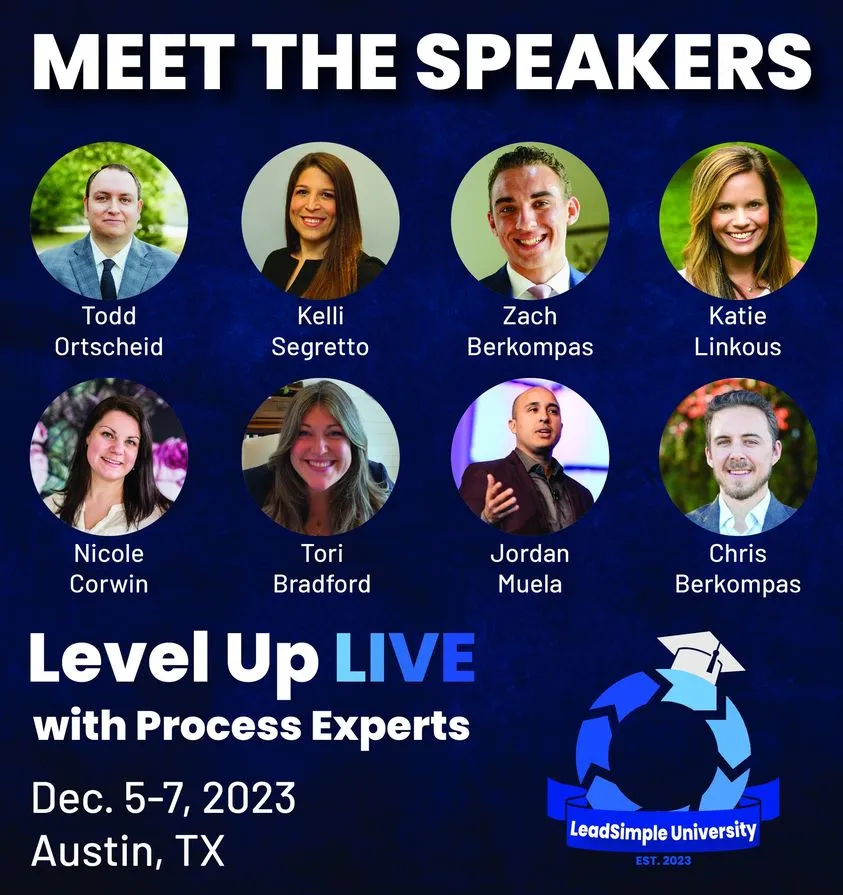
If your lineup doesn’t consist of well-known celebrities across the board, you can include their designations and major achievements to let everyone know that they are a big deal in their niches. Remember to tag them on every social media post. This will boost the reach and engagement of your content amongst the audience, earning you shares and retweets.
5. Share the Event Itinerary
To keep your audience’s attention towards you, keep unwrapping your event, layer by layer, giving information at a time. Next in line is the schedule of the event. Reveal the itinerary of the sequence of events with dates and times. Call people out to save the dates or clear their calendars.
6. Announce Your Ticket Sales
The most important part of event marketing is the actual sale of the event.
Whatever route you choose to take with the ticketing, make sure to announce it on every social media channel.
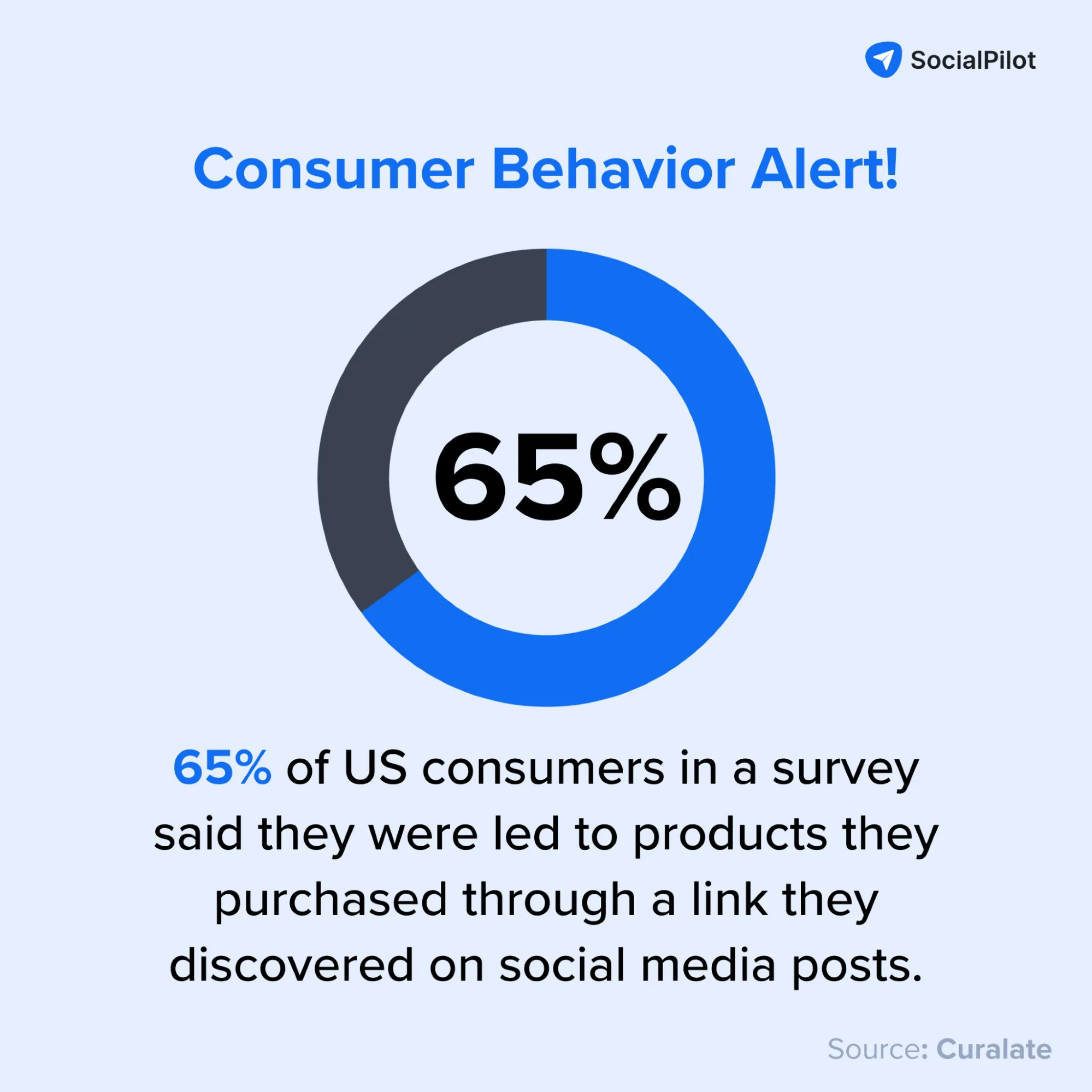
Every post hereafter should have the link to the platform you want people to buy their tickets from. Try to keep the process simple so people don’t face any glitches.
7. Countdown Posts
Countdown posts are generally used to keep people on their toes and nail down their anticipation of something exciting. You can decide when to start your stopwatch for your upcoming event.
The countdown can be for the event or the deadline for your bookings’ closing dates. These posts can urge people to register or book their tickets if they haven’t done it yet and hike the excitement of those who already have reserved their spots.
You don’t need to publish a highlight post every day, but once you start, keep a steady pace of posting every other day. Keep the number of days as the focal point of your creative. Also, don’t forget to take advantage of the actual countdown sticker in your Instagram Stories, created for this exact purpose.
8. Harvest the FOMO
When people are undecided about whether they want to attend an event, you have to push them off the fence and into committing to attending. An effective way of doing that is leveraging their fear of missing out.
“Spots filling fast!” or “Tickets selling out” type of posts can do the trick perfectly!
You have already lured them in with all the information about the event, so seeing their chance of attending the event slipping from their palms might be the perfect inspiration they need to book their spots.
Remember to add the link to lead them directly to the booking page on your website. This makes the decision journey for the potential attendees smooth without any hiccups. They would already have booked their spot before having any second thoughts.
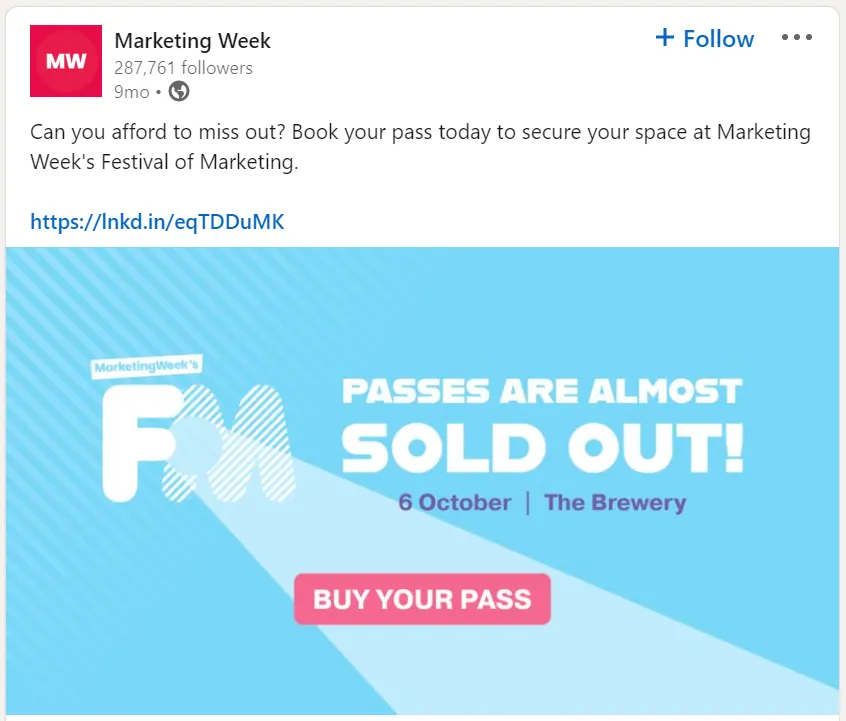
9. Engage With the Interested
One important thing people forget while doing social media event marketing is to respond to the messages and comments they receive. Not responding might lose a lot of sign-ups this way. Keep an eye on every comment, message, and query which might come your way on social media.
They might have a question holding them back from securing a seat at the event. Or they may be showing their excitement for the event, which you must address. This shows that the brand cares about them.
Monitoring messages and comments from so many social media platforms becomes too difficult. But this step just can’t be skipped! Is there a solution to easily manage all audience feedback from one place?
SocialPilot has just the solution!
The Social Inbox is an integrated dashboard where you can see all the comments, DMs, and reviews from different social channels. Reply and respond to them in real time to keep your engagement proactive.
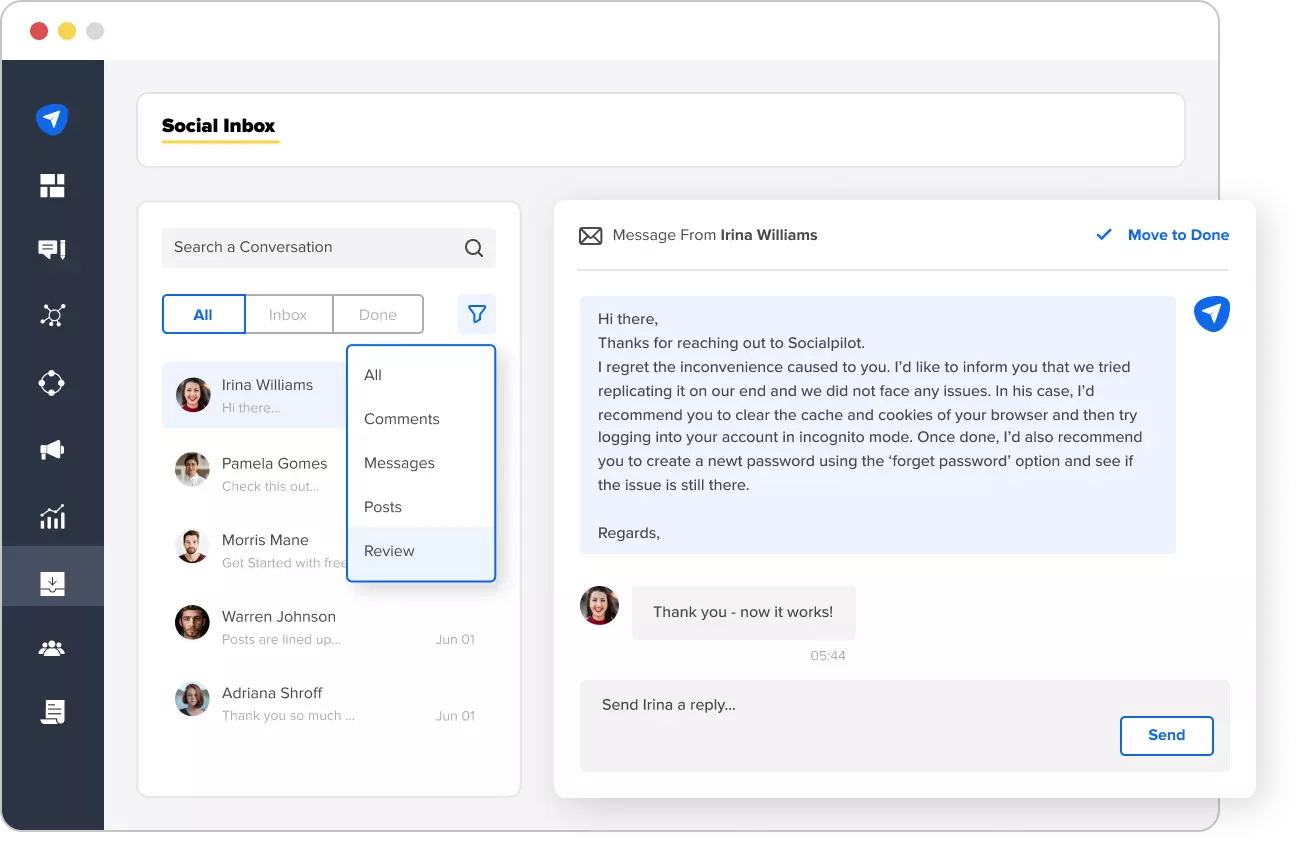
Social Media Activities During the Event
Now we come to the main event, literally! So, let’s see what tactics can be used for social media marketing in real time.
1. Live-Action
With the event underway, maximizing exposure is crucial. If it’s an online event, it must already be broadcast in real-time.
For offline events, live video features like Facebook & Instagram Live can transport your followers directly to the heart of the action. YouTube is also perfect for live telecasts and real-time audience interaction. For quick updates and trending conversations, Twitter is your go-to platform.
2. Photo Wall
Give your audience a proper backdrop to capture, share event vibes, and show it off. Create a selfie wall or booth with the event name and hashtag where they can get their photos clicked or take selfies.
Remember, the goal of a photo wall is to create a visually captivating space that sparks excitement and encourages attendees to capture and share their experiences.
3. Posts and Stories in Real Time
Stories are one of the most well-suited posts to promote an event while it’s happening.
In fact…
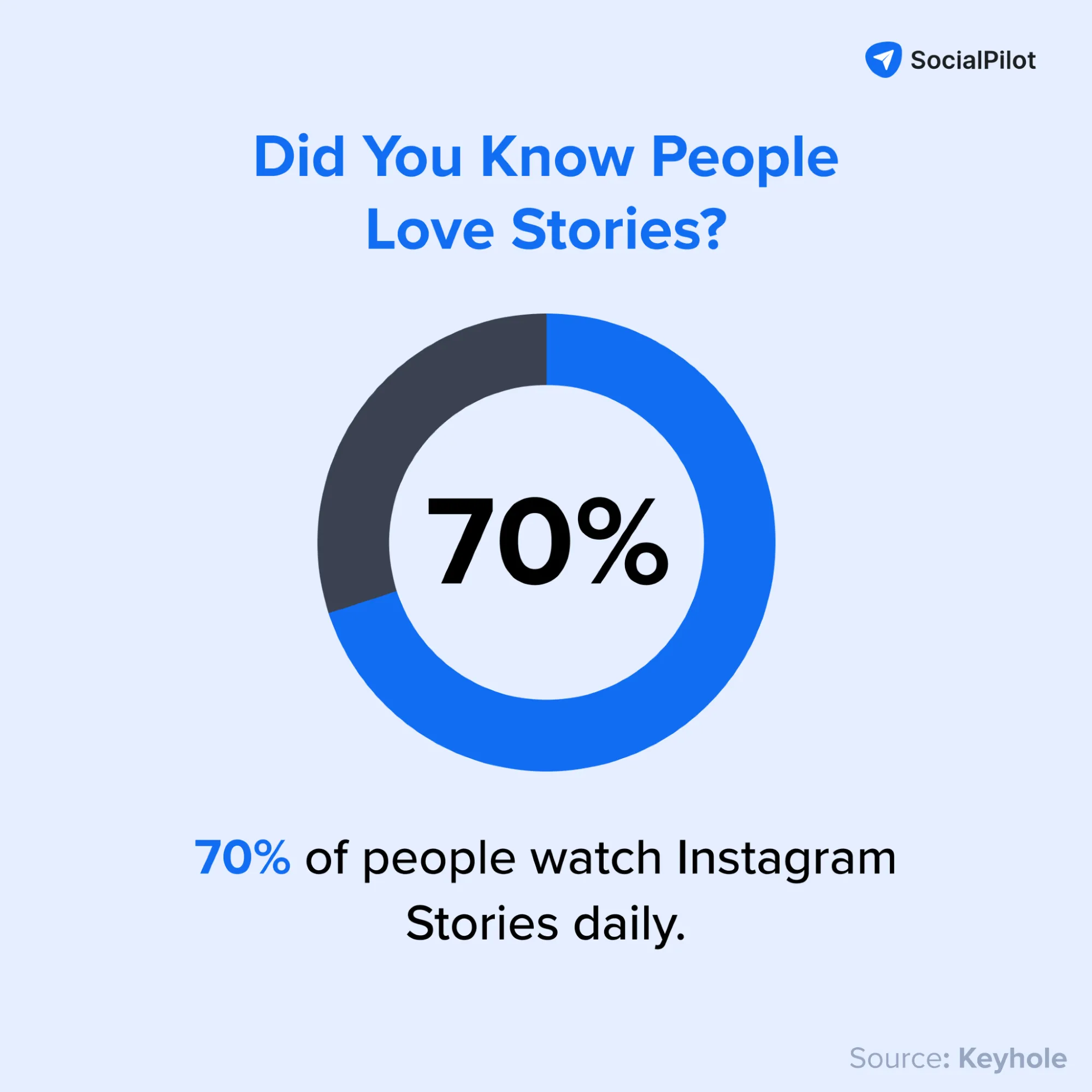
Not only the management at the event can do this you can also ask attendees to put Stories. The more the event is shared on social media, the better exposure. Also, remember to make your Stories interesting with stickers, music, and other elements.
4. Behind-the-Scenes Scoop
Share exclusive glimpses of event preparations, backstage moments, or speaker rehearsals. This can create anticipation and make your audience feel part of something special.
5. Quote the Favourites
Capture the essence of the event by quoting famous personalities and speakers there. These can be funny ones or educational and informative ones. They create content worth sharing. You can do this with nothing but a simple tweet. These quotes can later be repurposed as visual posts.
Don’t forget to tag the relevant speaker as well!
Post-Event Social Media Marketing
After the event concludes, keeping the momentum alive is essential. Here are some strategies to ensure your event continues to resonate.
1. Express Gratitude
Begin by thanking everyone who attended, especially those who played a significant role. This includes sponsors, partners, speakers, special guests, and volunteers. Publicly acknowledge their contribution on all your social media platforms. This not only shows appreciation but also fosters future collaborations.
2. Highlight Key Moments
Capture the essence of the event through recap posts. These could include memorable moments, audience reactions, and behind-the-scenes footage. Share these as Instagram highlights or short videos, providing a nostalgic recap for attendees and a glimpse for those who couldn’t attend.
3. Gather Feedback
Understanding attendees’ experiences is crucial. Conduct surveys or create social media polls to gauge their impressions. Encourage them to ask questions and share feedback on social media platforms. This feedback can be repurposed into new posts, acknowledging the individuals who provided it.
4. Share User-Generated Content
If attendees or others share content related to the event, repost it. This enhances your event’s social media presence and makes users feel recognized and valued.
5. Analyze Key Social Media Event Metrics
After the event, it’s time to measure the impact of your social media marketing.
Engagement metrics like likes, comments, shares, and retweets can provide insights into how your event resonated with your audience. Reach and impressions metrics can help understand the size of your event’s online audience and the frequency of content views.
Comparing the performance across different social media channels can help identify the most effective ones.
These were just some tactics to use social media to promote events. Now you can take your own approach because every event you market will be different, so you need to customize the plan accordingly.
But managing so many aspects of an event’s social media promotion can cause even the seasoned pros to struggle. This is where an expert to can help you out.
Who is that?
SocialPilot: The Perfect Tool for Social Media Event Marketing
SocialPilot is just the social media management tool you need to optimize your social media event marketing efforts.
How, you ask?
The tool hosts a plethora of sophisticated features like Advanced Scheduling and Publishing, a Social Inbox for managing all conversations online, robust Analytics, and a streamlined Team and Client Collaboration workflow so all of your group can work together hassle-free to achieve the desired goals.
The best thing: SocialPilot can do it all for all your profiles across multiple social media channels from the same integrated dashboard!
Let’s explore the key features of SocialPilot in a bit more detail:
- Scheduling and Publishing: SocialPilot allows users to create, customize, and schedule posts in advance, ensuring timely release on social media platforms. The tool supports various content types and includes features for optimizing posts to attract more audience interest.
- Analytics: An integral part of any social media tool, the feature helps you gauge your performance on every social platform you marketed on. SocialPilot gives in-depth social media metrics for every type of post, including their reach and impressions, likes, and reactions as well. You can also generate timely reports from the tool to share with the stakeholders in the event and your team to tweak your strategy in the right direction.
- Social Inbox: This helps users manage all kinds of conversations, feedback, comments, and reviews on multiple social media networks from one single space. You can monitor the communication, respond, and reply to them immediately to establish your brand as audience-centric.
- Team and Client Collaboration: SocialPilot enhances team efficiency by facilitating seamless collaboration. This feature allows the onboarding of clients and team members for content creation and management. The tool also provides permission-based access and approval workflows to ensure alignment with the event strategy.
You can get all this and more at a monthly subscription, but before committing, you can try SocialPilot’s 14-day free trial available for hesitant marketers.
Conclusion
We’ve now reached the end of our comprehensive social media event marketing guide. We’ve endeavored to cover all stages of an event marketing project, detailing strategies to guide your audience from initial awareness to active commitment and participation.
Our goal extends beyond merely attracting an audience to the event. We aim to harness the power of social media to ensure the event’s impact resonates long after it concludes, creating a lasting impression. By strategically utilizing the strengths of each social media platform, you can successfully achieve the objectives outlined in your campaign’s planning stage.
So, seize the opportunities, experiment with diverse content strategies, and don’t hesitate to think creatively and innovatively. The world of social media event marketing is ripe with potential, waiting for you to explore and make your mark.
